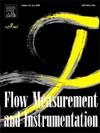Numerical simulation of the multiscale cavitation flow in a hydraulic slide valve
IF 2.3
3区 工程技术
Q2 ENGINEERING, MECHANICAL
引用次数: 0
Abstract
Cylindrical slide valves are commonly used in various hydraulic control systems. Due to their working characteristics, cavitation often occurs when hydraulic oil flows through the valve port, which threatens the stability of the entire hydraulic system. Therefore, the study of cavitation phenomena inside valves has important practical significance.
This study used the Euler-Lagrange bidirectional coupled multi-scale cavitation model to simulate the cavitation phenomenon inside a cylindrical slide valve numerically. We examined the specific morphological characteristics of cavitation occurring at various positions within the valve and investigated the influence of oil temperature on the size of microbubbles. The results indicate that the cavitation morphology at the sharp edge of the valve port is greatly affected by the temperature of the hydraulic oil. It is a traveling cavitation at low temperatures, and as the oil temperature increases, it gradually transforms into cloud cavitation. The macroscopic cavitation bubble shape inside the low-pressure chamber of the valve gradually stabilizes with the increase of inlet oil temperature. The Sauter diameter of micro-bubbles inside the valve decreases with increasing oil temperature. In addition, the inlet oil temperature will have a certain degree of impact on the mass-weighted diameter distribution of microbubbles flowing out from the valve outlet. Therefore, in actual working conditions, removing air bubbles within a specific size range in hydraulic oil is recommended to reduce the adverse effects of hydraulic oil cavitation.
求助全文
约1分钟内获得全文
求助全文
来源期刊

Flow Measurement and Instrumentation
工程技术-工程:机械
CiteScore
4.30
自引率
13.60%
发文量
123
审稿时长
6 months
期刊介绍:
Flow Measurement and Instrumentation is dedicated to disseminating the latest research results on all aspects of flow measurement, in both closed conduits and open channels. The design of flow measurement systems involves a wide variety of multidisciplinary activities including modelling the flow sensor, the fluid flow and the sensor/fluid interactions through the use of computation techniques; the development of advanced transducer systems and their associated signal processing and the laboratory and field assessment of the overall system under ideal and disturbed conditions.
FMI is the essential forum for critical information exchange, and contributions are particularly encouraged in the following areas of interest:
Modelling: the application of mathematical and computational modelling to the interaction of fluid dynamics with flowmeters, including flowmeter behaviour, improved flowmeter design and installation problems. Application of CAD/CAE techniques to flowmeter modelling are eligible.
Design and development: the detailed design of the flowmeter head and/or signal processing aspects of novel flowmeters. Emphasis is given to papers identifying new sensor configurations, multisensor flow measurement systems, non-intrusive flow metering techniques and the application of microelectronic techniques in smart or intelligent systems.
Calibration techniques: including descriptions of new or existing calibration facilities and techniques, calibration data from different flowmeter types, and calibration intercomparison data from different laboratories.
Installation effect data: dealing with the effects of non-ideal flow conditions on flowmeters. Papers combining a theoretical understanding of flowmeter behaviour with experimental work are particularly welcome.
 求助内容:
求助内容: 应助结果提醒方式:
应助结果提醒方式:


